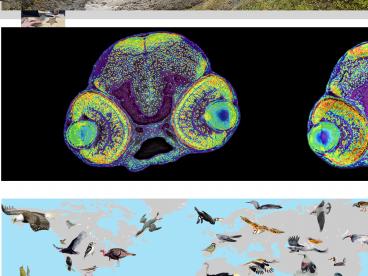Sustainable harvest of Finnish moose population - PowerPoint PPT Presentation
1 / 38
Title:
Sustainable harvest of Finnish moose population
Description:
Sustainable harvest of. Finnish moose population? Esa Ranta, Anne ... the population size is overestimated or. underestimated? - estimations tend to be biased? ... – PowerPoint PPT presentation
Number of Views:114
Avg rating:3.0/5.0
Title: Sustainable harvest of Finnish moose population
1
Sustainable harvest ofFinnish moose population?
- Esa Ranta, Anne Luoma, Veijo Kaitala
- FGFRI
2
Contents
- Basic information on Finnish moose population and
harvest
3
Contents
- Basic information on Finnish moose population and
harvest - Stochastic IBM model
4
Contents
- Basic information on Finnish moose population and
harvest - Stochastic IBM model
- Four questions
5
Contents
- Basic information on Finnish moose population and
harvest - Stochastic IBM model
- Four questions
- Four answers
6
Moose (Alces alces)
7
(No Transcript)
8
Moose population in Finland
- Population size estimates
- Hunter observations (during the hunting season)
- their estimate of post-harvest pop.size
- Wildlife triangle (snow track census)
- Aerial surveys
- 20-50 of population is killed annually.
- Age structure of population is controlled.
- Reproduction rate is high (mostly due to high
harvest rate of young animals)
9
100 000
Winter population
80 000
Harvest
60 000
Number of moose
40 000
20 000
0
2000
1930
1950
1970
1990
The moose population and the annual harvest in
Finland 1930 - 2000.
10
Killed animals (ind/100km2)
11
Modelling moose population dynamics
- with individual based,
- stochastic model
Annual reproduction rate 0.9 calves/ a
female Non-hunting mortality 5 of winter
population Hunting mortality (hunting rate) 15
- 25 of the harvestable population
12
(No Transcript)
13
Question 1
- Given the current population status
- What is the risk of moose population decline?(10
year time-window)
14
Probability of population decline
Hunting rate of females
15
Answer 1
- The risk of moose population decline increases
substantially when annual harvest fraction
inceseses from 15 of the harvestable population
size(10 year time-window)
16
(No Transcript)
17
Question 2
- Given the current population status, with errors
in population estimates - The wish is to reduce current population to a
much lower lewel - What will happen?(10 year time-window)
18
There are reasons to limit the population
size. But if we want to get the pop. size really
low, It is important to know What if.. - the
population size is overestimated or
underestimated? - estimations tend to be
biased? How crucial effects do inaccurate
estimates have on moose population?
19
- Real Estimated
- Population size in winter
- 10 000 8 000 - 12 000
- Targeted population size 5 000
- Population size in autumn
- According to model 1.5 winter pop.
- (realistic and productive populations)
- 10 000 - winter 12 000 - 18 000
- mortality birth
- Hunting (h) h Estimated pop. size - 5 000
animals - Left
- pop. in autumn - h ? estim.pop. - h 5 000
20
Different types of estimation errors
21
Realistic population structure
Population sizes after hunting
22
Realistic population structure
Cumulative sum
Population size after hunting
23
Answer 2
- With uncertain population estimates reduction of
curent population size to a lower targeted size
will yield to population sizes that are much
lower than the target (10 year time-window)
24
(No Transcript)
25
Mooses come walking over the hillMooses come
walking, they rarely stand stillWhen mooses come
walking they go where they willWhen mooses come
walking over the hill- Arlo Guthrie
26
Question 3
- How does landscape structure influence risk of
moose population decline due to harvesting?
27
Moose populatin in landscape
28
Moose population in landscape
Dispersal success
Risk of population decline
29
Answer 3
- Under many different dispersal scenarios risk of
population decline is the highest in the corner
units, then come the border units - The risk is the lowest in the central units
30
(No Transcript)
31
Question 4
- What is the hunting strategy yielding the highest
harvest with a given targeted population size?
32
Moose harvest in Finland
Harvest, ind. 10 km-2
Winter herd, ind. 10 km-2
33
Harvest scenarios
Harvest
Winter herd size
34
Maximum harvest, target 4 ind. km-2
Intercept
Slope
Total harvest, ind. km-2
35
Answer 4
Harvest
Winter herd size
36
Conclusions
- The simple IBM model on moose population renewal
has served us well in answering a few basic
questions on the future of moose and moose
harvesting in Finland
37
Conclusions
- The model does not rely upon very complex
assumptions (births, deaths, sex, harvesting),
yet we believe it captures the essence of moose
life
38
Conclusions
- The model prompts where more information is
needed - dispersal, population estimates, harvest
management - Some of the answers would not necessarily have
called for an IBM model































